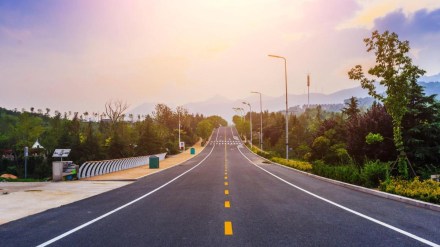In 2024, India is poised for a substantial expansion of its highway network, as new expressways are set to transform the country’s transportation landscape in the coming months. The National Highway Authority of India (NHAI) has meticulously outlined the completion schedule for these expressways, aligning with Road and Transport Minister Nitin Gadkari’s affirmation of their imminent operational status. Anticipated to coincide with the upcoming Lok Sabha elections around the summer of 2024, several pivotal expressways are slated to open for the public.
As we step ahead into the new year, here is a list of five forthcoming expressways, expected to be fully operational in the next 12 months:
Delhi-Mumbai Expressway
The eagerly anticipated Delhi–Mumbai Expressway, India’s longest and pivotal route linking the nation’s capital to its financial hub, is on track for completion by the forthcoming year. According to Nitin Gadkari, the expressway will be ready and commence operations by February. Currently, a 209-kilometer stretch from Sohna in Haryana to Dausa in Rajasthan has been opened. Spanning a total distance of 1,386 kilometers, this expressway will traverse five states—Delhi, Haryana, Rajasthan, Gujarat, and Maharashtra. Delhi marks the shortest section at nine kilometers, while Gujarat dominates with a 423-kilometer expanse. Promising to slash the Delhi-Mumbai distance by 180 kilometers, this expressway is set to shrink travel time from 24 hours to a mere 12, marking a significant leap in connectivity and travel efficiency.
Bengaluru-Chennai Expressway
Like the Delhi-Mumbai Expressway, another crucial link connecting major Indian cities is soon to materialize. Constructed by NHAI at a cost of ₹17,000 crore, the 262-kilometer Bengaluru-Chennai Expressway, also known as National Expressway 7 (NE7), aims to significantly reduce travel time between these cities to slightly over two hours, surpassing flight duration. Set with a 120 kmph speed limit for light vehicles, Gadkari’s vision underscores enhanced connectivity and a swifter commute for travelers between Bengaluru and Chennai.
Dwarka Expressway
India’s maiden elevated urban highway faced several months of delay due to construction restrictions imposed to combat pollution levels. However, the anticipated opening is now on the horizon, slated before the onset of the upcoming summer. Final touches are underway before the formal inauguration of the Dwarka Expressway, also known as the Northern Peripheral Road, extending across 29 kilometers. This significant thoroughfare links Dwarka in Delhi to Gurugram in Haryana, commencing at Shiv-Murti on NH-8 (Delhi-Gurugram Expressway) and concluding near the Kherki Daula Toll Plaza, navigating through Dwarka Sector 21, Gurugram border, and Basai. Spanning 19 kilometers through Haryana and 10 kilometers through Delhi, this expressway serves as an alternative route to the Indira Gandhi International Airport and is poised to alleviate up to 50% of traffic congestion on the National Highway 8.
Delhi-Amritsar-Katra Expressway
The forthcoming expressway linking Delhi and Amritsar is poised to significantly cut travel time to a mere four hours upon its completion. The National Highways Authority of India (NHAI) is optimistic about the operationalisation of the Delhi-Amritsar-Katra Expressway, spanning 669 kilometers, by the end of 2024. This new infrastructure aims to facilitate a six-hour drive from Delhi to Katra, reducing the distance by 58 kilometers. Notably, the expressway will interconnect various revered religious destinations such as the Golden Temple in Amritsar, Gurdwara Darbar Sahib in Taran Taran, and Vaishno Devi in Katra.
Delhi-Dehradun Expressway
The ongoing construction of the last segment of this expressway signals the imminent opening of the Delhi-Dehradun Expressway. This development is anticipated to significantly decrease travel time between Delhi and Dehradun to under three hours. Notably, the final 20-kilometer stretch of the expressway traverses an environmentally sensitive region within Rajaji National Park. To mitigate the impact, the National Highways Authority of India (NHAI) is in the process of building Asia’s longest elevated wildlife corridor. This corridor encompasses a 340-meter-long Daat Kali tunnel, offering an alternative route that bypasses the protected forest area.
